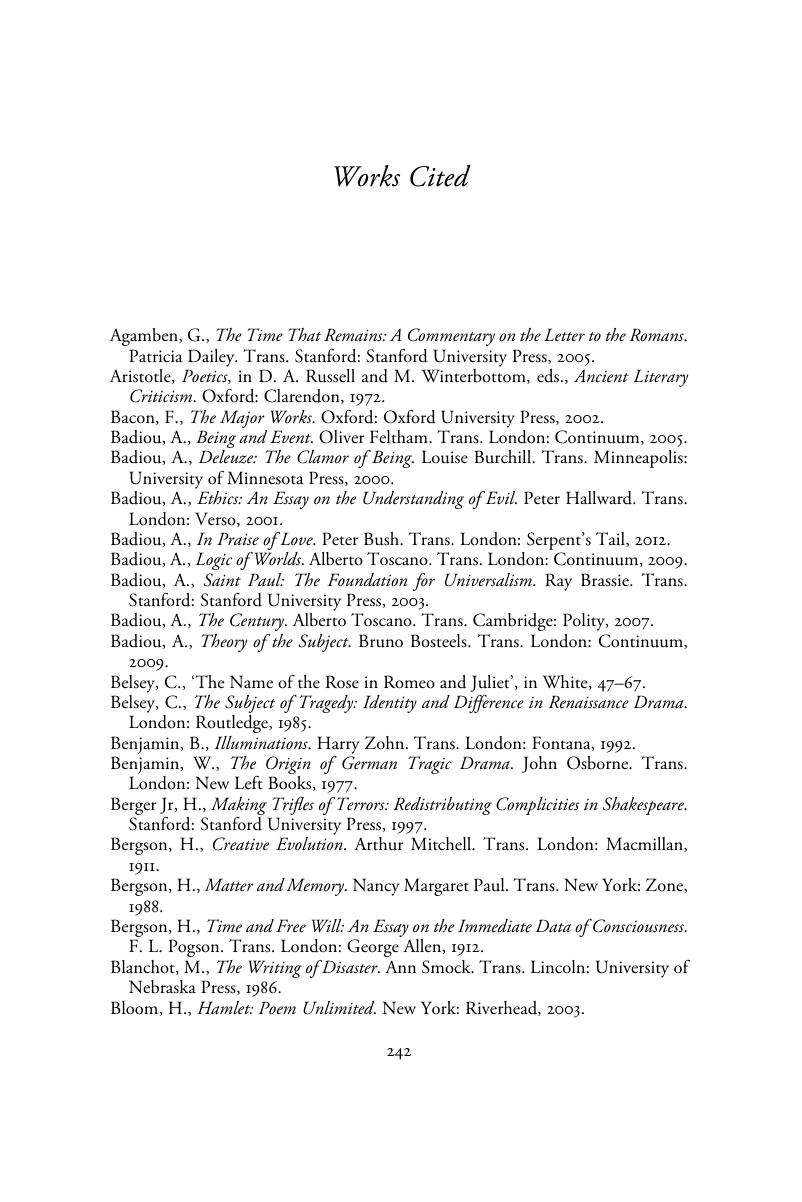Book contents
- Shakespearean Arrivals
- Shakespearean Arrivals
- Copyright page
- Contents
- Acknowledgements
- Introduction
- Chapter 1 Thinking Arrivals
- Chapter 2 The Subject of Love in Romeo and Juliet
- Chapter 3 Love’s Late Arrival: Wonder and Terror in Othello’s ‘High-Wrought Flood’
- Chapter 4 The Ghostly Event(s) of Hamlet
- Chapter 5 Macbeth: The Arrival of Evil
- Chapter 6 The Cordelia Event: Seizing the Vanished in King Lear
- Afterword
- Notes
- Works Cited
- Index
- References
Works Cited
Published online by Cambridge University Press: 21 December 2017
- Shakespearean Arrivals
- Shakespearean Arrivals
- Copyright page
- Contents
- Acknowledgements
- Introduction
- Chapter 1 Thinking Arrivals
- Chapter 2 The Subject of Love in Romeo and Juliet
- Chapter 3 Love’s Late Arrival: Wonder and Terror in Othello’s ‘High-Wrought Flood’
- Chapter 4 The Ghostly Event(s) of Hamlet
- Chapter 5 Macbeth: The Arrival of Evil
- Chapter 6 The Cordelia Event: Seizing the Vanished in King Lear
- Afterword
- Notes
- Works Cited
- Index
- References
Summary

- Type
- Chapter
- Information
- Shakespearean ArrivalsThe Birth of Character, pp. 242 - 248Publisher: Cambridge University PressPrint publication year: 2018

